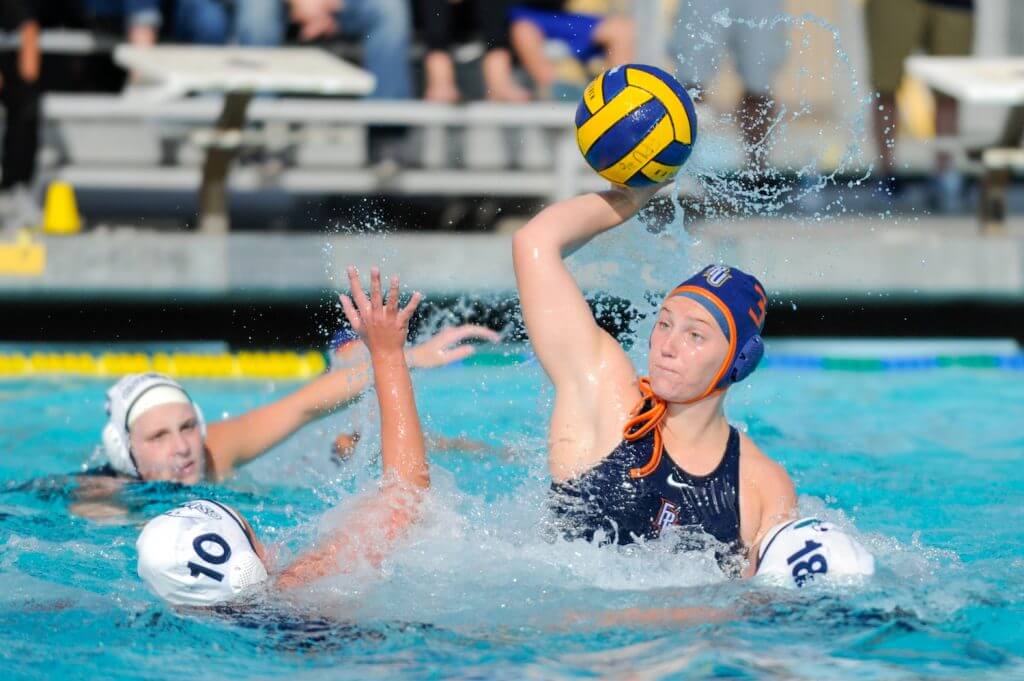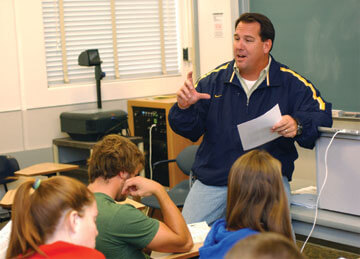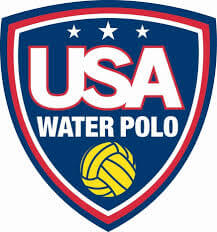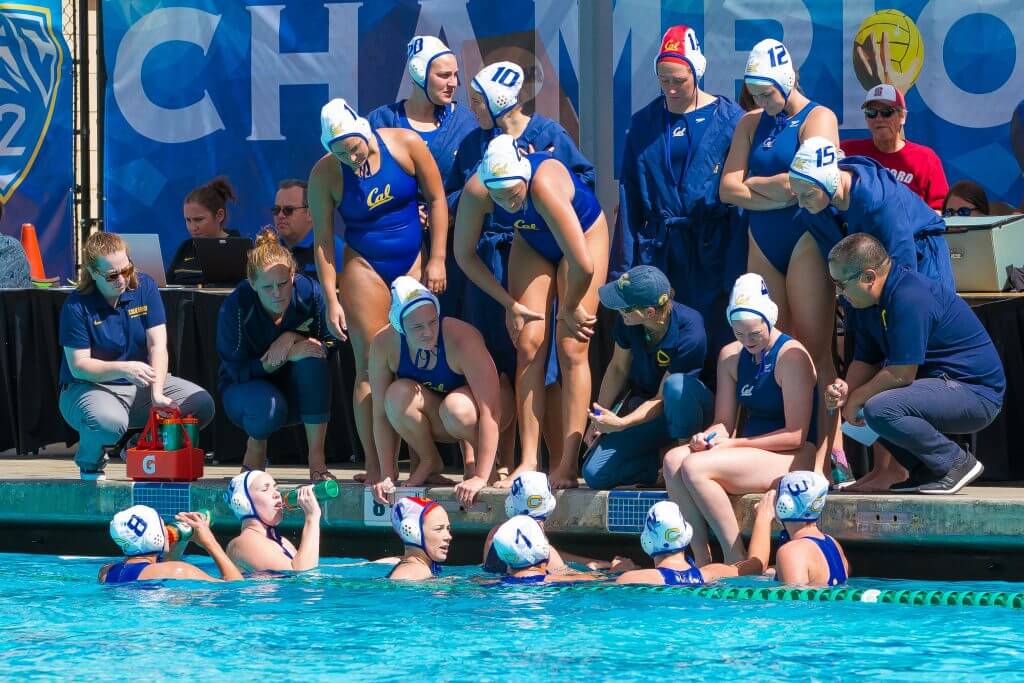On The Record With Steve Doten of the Western Water Polo Association

By Michael Randazzo, Swimming World Contributor
With all the concern expressed about the fate of Hartwick women’s water polo—which has been ticketed for elimination at the end of the 2018 season—many influential people in the polo community are stepping up their efforts to save Hawk polo.
 One prominent voice is Steve Doten, currently the commissioner of the Western Water Polo Association, one of the few single sport conferences in the National Collegiate Athletics Association. Doten, who in almost three decades in the sport has been a player at Cal—under legendary coaches Pete Cutino and Steve Heaston, a coach at UC Davis and now is overseeing all operations at the WWPA. Over the years he has seen the highs—including the mercurial rise of American women’s water polo—and the lows, such as multiple threats and cuts to specific men’s and women’s programs. Doten has been one of the leading supporters of the Change.org petition for Hartwick polo that is closing in on 10,000 signatures.
One prominent voice is Steve Doten, currently the commissioner of the Western Water Polo Association, one of the few single sport conferences in the National Collegiate Athletics Association. Doten, who in almost three decades in the sport has been a player at Cal—under legendary coaches Pete Cutino and Steve Heaston, a coach at UC Davis and now is overseeing all operations at the WWPA. Over the years he has seen the highs—including the mercurial rise of American women’s water polo—and the lows, such as multiple threats and cuts to specific men’s and women’s programs. Doten has been one of the leading supporters of the Change.org petition for Hartwick polo that is closing in on 10,000 signatures.
Doten knows first-hand what happen when a program is threatened with extinction. In 2009, during a budget crisis that threatened the athletic budgets of many University of California campuses, he marshalled support to ensure that the men’s polo program he led at UC Davis wouldn’t be eliminated. Running a grass roots and ultimately successful campaign to fund Aggie polo, Doten learned hard lessons about preserving his sport, lessons he’s willing to share with the water polo community.
Swimming World spoke recently with Doten about his life-long devotion to polo, his new career with the WWPA, one of the more innovative conferences in the sport, the continuing threats to various programs, including Hartwick, and the phenomenal promise of the women’s game in the U.S. which has yet to be fully realized.
– Talk about the transition from being a coach in the WWPA to being its commissioner.
I’m still trying to figure out if it’s a promotion or demotion. It’s mostly an up!
That was always the career plan; spend time coaching and use that experience to help [water polo] on a larger scale. I see the commissioner job as allowing me to do that.
My time at UC Davis [2001-12] was well served, especially when talking about the Hartwick situation. We went through sports cuts during that time. Even when you go back to my Cal days, when I finished up in the early 1990s, that was another cut period, when UCLA’s men’s swim team was eliminated.
Going back to the days of Pete Cutino and Steve Heaston, I had just graduated but was still around the program. That’s when Pete started an endowment with the Speikers and the Fischers and the Cronks [the Splash Club Endowment] and those families came in and saved polo and men’s swimming [at Cal].
The water polo world got together to make sure that UCLA wouldn’t lose their water polo program. Having been around that, when it came to UC Davis in 2008-9, I was prepared that this was real, this could happen.
Ten years later, here we go again with Hartwick. And Cal State Bakersfield just lost their [women’s] program.
The petitions are great, and I would say that what made UC Davis successful was the greater water polo community—not just the UC Davis alumni friends and family—[who] stepped up in a big way to help us out at that time. We set up a page, we used Water Polo Planet—everything we could to reach as many people as possible.
[The Davis situation wasn’t] like at Hartwick, which is: Hey, we’re going to cut your program. I was told privately that there’s a short list [of programs to be cut and water polo was on the list. I didn’t waste any time because I [knew] that historically water polo’s the first one to go. I told everyone and then John Vargas, Kirk Everist and Jovan Vavic wrote checks. Wolf Wigo and Kap7 sponsored the program and Wolf wrote this amazing letter on our behalf.
I basically gave [the UC Davis administration] a zero budget that we could fund it and not use any university dollars. And they didn’t cut the sport.
The message is: people have to show support for the program. And it’s amazing how many $50, $100 donations you get with the volume of people out there and how much it helps.

Steve Doten. Photo Courtesy: UC Davis
You’d like to have the big guys—the Cronks or the Fischers or Mike Childs—the endowment I helped start now endows the men’s position at UC Davis. [They’re] adding a women’s team because of Title IX and the equity make-up on campus. That’s going to be very difficult financially. Without having started that endowment years ago and now it’s again saving the program. It would be easy to cut a men’s sport but they can’t cut water polo, just like Cal and Pete in 1990, they started this thing and then they re-upped it and saved it years later.
I think every water polo program in the country has to look to endow a piece of their coaching position like Stanford and Davis because I think this will be an on-going issue [of] where they want to allocate the dollars.
– What is your sense of how the situation with Hartwick has progressed, from announcement to community response?
I haven’t looked at their EADA report [Equity in Athletics Disclosure Act] and their university numbers—population, athletic opportunities—because cutting a women’s team is not going to bode well with those gender equity numbers. And it is a perceived money saver. So Maryland, back in the day [2012] they lost their program too, and Maryland has Under Armor behind them.
My take on it is, all sports are getting expensive; if you want to keep up in football and basketball you have to reallocate. That’s how you prioritize.
With that said, I don’t know their financial situation. But they’re not going to bulldoze the pool. The facility is going to be there. That cost is going to remain if you put a water polo team in there or not. Unless they’re saying they’re going to get rid of that facility and they won’t have that cost. Because I know pools are expensive.
I don’t know how they come up with that cost. Is it on the water polo coach to help fund that facility or his salary and the scholarships if they have any? It depends on how they look at the budget and what their needs are.
– What if Hartwick were to drop down to DIII?
At the WWPA, the vision is to fill the space in the Division II world. We want to capture these great universities playing water polo and giving this kind of a student an opportunity that’s not necessarily one that’s like Indiana, [which is] Big 10. They have a lot of money and a particular concept of a national championship.
In our sport of water polo there’s just one championship. We don’t have enough numbers to have a DI championship and a DII or a DIII. That’s why you see DI’s, DII’s and DIII’s playing together.
I said to my athletic director at the time: Here are my guys that I recruited without money, and we have a MVP of the conference, an All-American. So you can be competitive without a full complement of scholarships. I know that’s more easily said on the men’s side because there’s only 4.5 and for the women it’s eight. But there’s some cost-saving measures you can do so that you don’t have to cut a program and still be competitive.
When I arrived on the Davis campus in 2001, they were Division II. The DII rules at the time said that you could have two sports and you can mark or distinguish them so they play as DI. Our wrestling and our gymnastics teams were DI. The DIII rules may be the same; it looks like Hartwick elevates water polo to DI. It’s a DIII institution—if they have other sports playing DIII then they’re a DIII institution. They could reclassify water polo at their school and fund it like other DIII programs.
If that were the case, why wouldn’t they do that?
– What role do you imagine USA Water Polo can play in this situation?
It’s ones and zeros. You win or you lose. If you have 100 teams, over time, 50% are on the positive, 50% are on the negative. You look at football or any sport, the cohort of the size of your population shrinks, because people want to support the winners. The teams that are winning get the money, and your sport dies off on the back-end. You go from 100, and over time you cut it in half because those losing teams don’t get the funding and they drop off.

So now you start over again and that new population; you win or you lose and if the model continues it dies off on the bottom end and you end up cutting those [teams] and you shrink down to a smaller size. Football’s seen it, water polo’s seen it. That’s why [Chris] Ramsey and [John] Abdou—everybody’s got to realize that all teams are important. We can’t just support the top programs. Every time we lose a program, it’s huge.
That’s what people said about UC Davis in 2010. It was too big, too successful—a UC on the West Coast—if we lost Davis, what would happen after that? They really rallied around [us], and Water Polo Planet—a volunteer organization—all those people did so much initially.
I hope USA Water Polo learned from that situation. They’re an important voice that should definitely be involved, have some impact. It was great when those letters started coming in on our behalf.
The message is: there’s no program too small. Colorado State, Baskersfield, Maryland, Hartwick. it was fun for me helping start the women’s program at Cal, an emerging sport, all this growth, all this positivity. But now when you go to NCAA meetings, the people at the NCAA committees, they’ll tell you that women’s water polo is no longer an emerging sport. It’s actually shrinking. Not good.
There’s enough metrics now that it’s getting smaller, which sends the wrong message. People have to think outside themselves and their own program. We have to look at the big picture or there’s going to be four water polo teams in the country competing against each other and there’s not going to be anyone else around
– Speaking about your conference, the WWPA is a fascinating collection of programs from all over the country.
That’s our vision on the women’s side. We think it’s great to have these West Coast and East Coast schools. We’re hosting at UC San Diego this year, but every other year we’ll be on the East Coast with our conference championship. We’re going to help build water polo across the country and we’ll be inclusive of these programs that want to be a part of us.
The idea is that Division II is a great space of universities, participation and a philosophy. Down the line, we’d like to have enough [schools] to have a DII national championship. We’re going to support Gannon and Mercyhurst and McKendree the best we can—in a greater mission of what’s it all about.
– McKendree is a new women’s program this year after starting men’s polo in 2017.
This is my first year in this side of the conference [women’s]. There’s been water polo in the region around Chicago for a long time. 20 years ago, coaching at Cal, Erin Kelly [1996-99] was from Chicago. One of our best players, this fabulous young woman came out to Cal.
I can see why they decided [to field teams]; our part is to give them a conference to be a part of, give them a level playing field. The CWPA is a bit challenging because it’s blended DI, DII and DIII, with different philosophies and resources.
As commissioner of the WWPA, we want to have these Division II schools, and the hurdle of distance and travel—we’re going to make it work, where we can play each other and have this conference championship.
I’d like to see more of that. If there were more schools coming on, we would welcome them into our conference.
– The biggest challenge for your conference is the disparate levels of competition—an issue that many varsity water polo conferences deal with. How do you as the commissioner address this?
I don’t do recruiting but one of my charges is: How do we improve the viability of our conference? We brought Matt [Berson] on this year on the women’s side, and he’s been going gangbusters with marketing and visibility. We’re hoping to get our brand and what we do out there.
Other conferences in bigger sports have an East and West or a North and South division play and then come together for a conference championship. I think that model would be great here. We could have a bunch of teams from the West and a bunch of teams from the East, during the regular season you play within your division. The visibility for those schools as we crossover will ideally help with recruiting for those programs.
On the women’s side there’s growth, there’s more institutions playing, there’s more scholarship money and frankly it’s more interesting than the men. Games like Hartwick beating Indiana—that’s awesome! You don’t see that as much on the men’s side.
Individual recruiting in the schools—those coaches have to do their part with that. Mike Schofield at Navy—and I was at Davis—we used to commiserate. UC Davis is the farthest university northeast in the state of California—we’re way up north and out farther. Annapolis is the furthest out in the East.
From my coaching days, I understand that conflict and as commissioner, I’m driven to help in that regard. We have conversations to help [teams] with travel and competition from a recruiting standpoint.
– You were there at the birth of Cal women’s water polo; what do you think of the Golden Bears now?
I was in graduate school at the time and Steve Heason asked if I would help Maureen O’Toole. I had been there as an undergrad and knew my way around. Without hesitation, I wanted to give back.
I actually thought I’d only do it for a year and I ended up [being involved] for four or five years before UC Davis called me.
At that time, we were playing against Coralie Simmons—she was with UCLA when I was coaching. I lost three straight national championship games to her.
Maureen O’Toole is the best women’s water polo player ever. I know Maggie Steffens is awesome, the best in her era, but kind of in between Maureen at the end of her time, and before Maggie, Coralie was an amazing water polo player, the best I had ever seen play. Water polo IQ through the roof. She would do things that I had no idea were possible.

Cal’s Coralie Simmons and her team. Photo Courtesy: Peter Trabucco
You see that in her coaching. She’s smart and played for great coaches—Guy Baker who helped start women’s water polo at UCLA and Adam Krikorian—some of the best in the world. I think it’s awesome that she’s there with her coaching staff—including Heather Petrie, who was on our team.
This last weekend, I went to UC Davis and watched the Aggies upset Pacific in triple overtime. The underdog won! Then, I was at Stanford on Sunday—I went down there to watch the Big Splash—and what a fantastic game as Cal beat undefeated Stanford.
My big take away? What a different level the women are playing at. 20 years later—I’ve got two daughters and a son—and I’ve seen a difference. It’s beautiful, it’s wonderful.
Give women resources, give them opportunities—it speaks straight to Hartwick. We can’t limit opportunities, we’ve got to make them available.
If those two underdog teams can do it, if the underdog East can do it, we CAN succeed.



